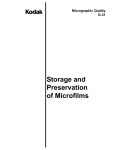Download USER'S GUIDE - Image Permanence Institute
Transcript
USER’S GUIDE FOR Awarded a Certificate of Technical Achievement in 1998 by the Academy of Motion Picture Arts and Sciences The Safe and Accurate Way to Check Film for Vinegar Syndrome Basic Instructions ........................................................ 1 En Español ........................................................... 2 Auf Deutsch ......................................................... 3 En Français .......................................................... 4 Detailed Instructions .............................................. 5-15 Bibliography ......................................................... 16-17 The development of A-D Strips was made possible by funding from the Division of Preservation and Access of the US National Endowment for the Humanities, the National Archives of Canada, the Canadian Council for Archives, and the National Film Board of Canada. © 2001 Image Permanence Institute 16 Important: Keep A-D Strips in the dark in a sealed plastic bag until ready to use. 1. Open can, box, bag, or drawer containing film and lay an A-D Strip on top of film within. Reclose. 2. Wait for the length of time recommended for the temperature and RH conditions in the test area. (See Table I on page 9.) 3. Remove strip and immediately compare to color bands on reference pencil. Place strip directly on band for best color judgment. 4. Record the number of the reference band that most closely resembles strip. 5. Discard A-D Strip after one use. BASIC INSTRUCTIONS FOR FILM TESTING See pages 5-15 for more information. Interpretation (Acetate Roll and Sheet Films) Le ve l Film Condition Re comme nde d Actions 0 Good - No deterioration Cool/cold storage 1 Fair to good - Deterioration starting Cold storage Monitor closely Rapid degradation starting - point of autocatalytic decay (see figure on page 12) Cold storage or freeze 2 Poor - Actively degrading Freeze Copying advisable 3 Critical - Shrinkage and warping imminent; possible handling hazard Freeze immediately C opy 1.5 1 INSTRUCCIONES BASICAS PARA EL TEST DE PELICULA Importante: Conserve las A-D Strips en su bolsa de plástico bien cerrada. Abra la bolsa sólo cuando esté usted preparado para usar las tiras. 1. Coloque la A-D Strip encima del rollo de película y tape muy bien la caja, contenedor, o lata. Si se emplea una bolsa asegurese de cerrarla completamente. 2. Espere por el lapso de teimpo recomendado para las condiciones de temperatura y humedad relativa (RH) correspondientes al área donde se realiza el test. (Refiérase Tabla 1 en la página 9.) 3. Extraiga la tira del contenedor e inmediatamente compare con las bandas de colores del lápiz de referencia. Coloque la tira directamente encima de la banda para un juicio más preciso del color. 4. Registre el número del color (en la tabla de referencia) que más se asemeje al color de la tira. 5. Deseche las A-D Strips una vez usadas. Para mayor información diríjase a las páginas 5 a 15. Interpretación (Película de Acetato en Rollo y en Hojas) Nive l Condicione s de la Pe lícula Accione s Re come ndadas 0 En buen estado - Sin deterioro Almacenamiento fresco/frío 1 Regular a bueno - Inicio de deterioro Almacenamiento frío Inspección continua 1.5 Inicio de degradación rápida - punto de deterioro autocatlítico (página 12) Almacenamiento frío o congelamiento 2 Pobre - Degradando activamente Congelar para preservar Se recomienda duplicar 3 Condiciones críticas - encojimiento, distorsión inminente. Posible riesgo para la salud durante su manejo Congelar inmediatamente Duplicación inmediata 2 Wichtig: A-D Streifen bis zum Gebrauch in verschlossener Verpackung im Dunkeln aufbewahren! 1. A-D Streifen auspacken und auf das Filmmaterial in der Dose, der Schachtel, im Beutel oder in der Schublade legen; diese gut verschliessen. 2. Warten; Wartezeit entsprechend der Temperatur und Luftfeuchtigkeit im Testraum wählen. (Siehe Tabelle I, Seite 9.) 3. Streifen herausnehmen und sofort mit den Farbbändern auf dem Referenzstift vergleichen. Für den Farbvergleich Streifen direkt auf oder neben das Farbband legen. 4. Die Nummer des mit der Farbe des Streifens am besten übereinstimmenden Referenzfarbbandes notieren. 5. A-D Streifen nach einmaligem Gebrauch entsorgen. KURZANLEITUNG FÜR DAS TESTEN VON FILMEN Für weitere Informationen siehe Seiten 5–15. Auswertung (Azetat-Roll- und Planfilme) Numme r Zus tand de s Filme s Empfohle ne M as s nahme n 0 Gut - Keine Zersetzung Kühl- /Kaltlagerung 1 Mittelmässig bis gut - Beginnende Zersetzung Kaltlagerung Sorgfältig überwachen Beginnende schnelle Zersetzung Autokatalytische Zersetzung beginnt (Seite 12) Kaltlagerung oder Tiefkühlen 2 Schlecht - Schnell fortschreitende Zersetzung Tiefkühlen Kopieren empfohlen 3 Kritisch - Schrumpfung und Wellenbildung Sofor tiefkühlen bevorstehend; Handhabung kann Gefährdung Kopie anfertigen für Filmmaterial darstellen 1.5 3 MODE D’EMPLOI Important: Conserver les A-D Strips à l’abri de la lumière dans une enveloppe plastique scéllée jusqu’à utilisation. 1. Ouvrir container, boîte ou enveloppe contenant le film et placer un A-D Strip sur le film. Refermer le contenant. 2. Attendre pour une duré e déterminée en fonction des conditions de temperature et HR (se reporter Table 1, page 9). 3. Retirer le papier indicateur, et le comparer aussitôt à la charte de référence. Pour une meilleure appréciation de la couleur, placer directement le papier indicateur sur la couleur de référence. 4. Noter la référence correspondant le mieux à la couleur du papier indicateur. 5. Ne pas réutiliser le papier indicateur. Se reporter pages 5-15 pour des informations plus complètes. Interprétation (plan-films et film en bobines sur support acétate) Nive au Etat de cons e rvation du film Re commandations 0 Bon - Pas d'altération détectable Stockage à basse température 1 Satisfaisant - Début d'altération Stockage à basse température, contrôle périodique Point autocatalytique du processus d'altération Stockage à basse température 2 Mauvais - Altération rapide Congelation, reproduction conseillée 3 Etat critique. Rétraction et déformation du support imminentes; manipulation pouvant entraîner des altérations Congelation et reproduction 1.5 4 ACETATE FILM BASE DETERIORATION—THE VINEGAR SYNDROME Celluose acetate film is susceptible to a slow form of chemical decay known as the vinegar syndrome. This decay process causes plastic film base to become acidic, to shrink, and to give off the characteristic vinegary odor of acetic acid. Chemical reactions influenced by heat, moisture, and/or the presence of acidic vapors from nearby degrading film cause acid to be generated within the cellulose acetate support. From there it diffuses into the gelatin emulsion and often into the air, creating a sharp, acidic odor. The utility of A-D Strips is based on this phemonenon. Although both nitrate and acetate plastics are prone to chemical decomposition, A-D Strips are primarily designed for use with acetate film. Their use with nitrate film requires further investigation (see page 8). Polyester plastic is much more chemically stable than acetate or nitrate plastics; A-D Strips do not provide useful information about the state of preservation of polyester film base. Research at Image Permanence Photographic film has three principal Institute, Eastman Kodak Comcomponents: a support made of a sheet pany, and Manchester Metropoliof transparent plastic, a gelatin emultan University in the UK has consion, and an image of color dyes or metallic silver (see below). Three differtributed to a better understanding ent types of plastic have been used in of film base deterioration. A biblifilm manufacture to date: nitrate (from ography of writings on film dete1890 to 1950), acetate (from 1925 to rioration can be found at the end of the present), and polyester (from 1960 this booklet. to the present).* What Are A-D Strips? A-D Strips are acid-base indicator papers that turn from blue, through shades of green, and finally to yellow in the presence of increasing amounts of acid. (The A-D stands for “acid-detecting.”) They measure film deterioration indirectly by reacting to the amount of acidic vapor present in a confined air space around the film. After the strips are exposed, their color changes are compared to a color scale printed on the reference pencil provided in each package. This information can be used in Image Material Gelatin Emulsion Plastic Support * For a full discussion of film history, identification of film type, film deterioration, and storage recommendations, see J. M. Reilly, IPI Storage Guide for Acetate Film, revised (Rochester, NY: Image Permanence Institute, 1996). 5 judging the adequacy of existing storage conditions for film preservation and also for prioritizing films for duplication based on their level of deterioration. A-D Strips were created to aid in the preservation of collections of photographic film, including sheet and roll films, cinema film, and microfilm. They provide a nondestructive method of determining the extent of vinegar syndrome in film collections. The strips were developed specifically for acetate films, but they may also be used for testing other materials that release acidic compounds when they decay—for example, cardboard, adhesives, textiles, wood, and other materials commonly encountered in museum environments.1 The A-D Strip color scale applies only to acetate, however; it will not give accurate quantitative results for other materials. A-D STRIPS AND FILM COLLECTION PRESERVATION A-D Strips are a diagnostic tool for vinegar syndrome. They can be used to determine the approximate extent of acetate support degradation in individual films, and they can also be used as a survey tool for gaining an overview of the condition of films in an entire collection. Using statistical sampling techniques, it is possible to obtain such an overview by testing the condition of only a small percentage of the total collection (see footnote 4 on page 13). Although it is often not possible or practical, testing every film in a collection and entering the data into a computerized database will produce a very accurate picture of the storage and duplication needs of a collection. Testing individual films whenever they are accessed is another approach. If A-D Strips are routinely used when a film is removed from storage for any reason, changes in condition over time can be monitored. The Need for Proper Storage A diagnostic tool like A-D Strips is only one part of managing the vinegar syndrome problem. The most important aspect of preserving acetate film is proper storage. All acetate and nitrate films, not just certain types or brands, are prone to degrade. The process of deterioration goes on every day, slowly or rapidly, depending on the temperature and relative humidity (RH) of the storage environment. It is a simple fact of life that acetate film will begin to seriously degrade in about 50 years at room temperature and moderate RH. Periods of higher 1 See Mary Kaldany, et al., “Evaluating the Stability of Commercially Available Artists’ Coloring Materials Used to Create Compensation Infills for Losses in Textiles,” JAIC, 38:3, Fall/Winter 1999, pp. 443-458 and Catherine Nicholson and Elissa O’Loughlin, “Screening Conservation, Storage, and Exhibit Materials Using Acid-Detection Strips,” Collections Caretaker, a publication of the Northern States Conservation Center, 1:4, Winter 1998/1999, pp. 4-5. 6 temperature and dampness will accelerate the process, and cold and dry periods will slow it down. Newly processed film stored in cool (less than 72°F/21°C) or cold (less than 50°F/10°C) conditions at moderate RH (20% to 50%) can be expected to last for centuries. Film stored under poor conditions may become degraded within a few decades. Color film benefits doubly from cold storage: under cold conditions, not only is the film base stabilized, but the rate of color dye fading is minimized as well. Recommended storage conditions for photographic films can be found in ISO Standard 18911:2000. Overall management of the vinegar syndrome problem in a film collection involves knowledge of the deterioration process, the provision of a good storage environment, and the safe monitoring of film condition using A-D Strips. USING A-D STRIPS Storage and Handling A-D Strips will remain in good condition for at least one year after purchase if the heat-sealed outer package is not opened. After opening, keep A-D Strips inside their resealable polyethylene bag and within the opaque outer bag when not in use. The strips should not be allowed to become too dry. A-D Strips are somewhat lightsensitive; they will fade if exposed Health Hazards Related to to room light for several days. The Degrading Film strips contain the dye bromocresol Close contact with severely degraded green, sodium salt. The dye is not acetate and nitrate films (touching or toxic, but it is water- and alcoholsniffing) may be a health hazard. soluble and will run if it gets wet. Acetic acid and other acidic products emitted by degraded film have been known to produce contact burns, skin and mucous-membrane irritations, and other physiological effects. When handling degraded films, protective gloves and adequate ventilation are strongly recommended. Use of A-D Strips eliminates the dangers of “sniffing” degraded film and also provides a more objective and accurate determination of the presence of degradation products. Use Conditions and Response Time The time required for A-D Strips to reliably indicate the presence of acidic vapors varies with the acid level of the film and the ambient temperature and RH. At room temperature and moderate RH, the strips begin to change color within a few minutes when the film is very acidic. If film is less acidic more time is needed, but the change is usually complete in about 24 hours. Response 7 time is slower at low temperatures or under dry conditions. A-D Strips may be used at or below freezing temperatures, but under such conditions users must allow more exposure time before reading the strip color. Table 1 suggests minimum strip exposure times based on climate conditions. (Of course, the goal in testing should be accuracy, not speed.) In order to establish the minimum exposure time required for a particular storage vault, the user might test a series of films at both room conditions and vault conditions to determine how long the exposure time must be in each case to achieve the same results. The resulting minimum exposure time can then be the standard practice for that particular vault. Is There a Maximum Exposure Time? Even at room conditions, strips may be left in contact with the material being tested for several weeks without compromising the results. However, if the strip is left inside the enclosure for several months, its color may shift and therefore may not give a true indication of film condition. A-D Strips Are Not Currently Recommended for Use with Nitrate Film Nitrate film degradation produces volatile nitrogen oxides, which are not immediately acidic in nature; they must react with oxygen and water before forming acids. In any case, the response of A-D Strips to degrading nitrate film can be slower than with acetate film, and the strips may show uneven color changes. If a color change does occur with nitrate film, it can be viewed as a reliable indicator of deterioration, but no change does not necessarily mean that the film is in good condition. Pending further research, IPI recommends using A-D Strips primarily for acetate film. Figure 1. To test roll film in a can, place a strip on top of the film and reclose the can. 8 Use and Placement of Strips with Roll Films A-D Strips should always be used inside a closed, confined space. Rolls Room 24 hrs. of cinema or microfilm can be evalu55°F/13°C 1 - 2 wks. ated in a closed can (vented or unvented), in a box, or in a plastic 41°F/5°C 3 wks. bag. Place a test strip on the film roll as shown in Figure 1. (Placing it on 35°F/2°C 4 wks. the reel will work, but color changes fastest when the strip is placed di25°F/- 4°C 6 wks. rectly on the film.) The strip should not be placed under the film; it must Table 1. Recommended minimum be exposed to the atmosphere inside exposure times for A-D Strips, based on the confined space of the enclosure. temperature in testing area and moderate Close the can, box, or bag and wait RH (30% to 50%). for the length of time recommended in Table 1. As long as the minimum recommended exposure time is observed, materials can be tested in situ. This is a far more practical procedure than removing films to another area for testing and then returning them to storage, especially when many films are involved, as during a survey. Cinema collections. A-D Strips may be used with both picture and magnetic track elements on acetate base. Interpretation for magnetic track film is similar to that for pictorial films. Does the length of the film roll matter? In general, the mass of film being tested has little bearing on the accuracy of the reading. In a laboratory test, two rolls of the same film, one a 25-foot roll and one a 400-foot roll, enclosed in matching cans, gave identical readings after 48 hours at room conditions (a 400-foot roll holds sixteen times more film than a 25-foot roll). However, it has been observed that in cold conditions film mass may affect response time (the greater the mass of film, the faster the response of the strip). Also, in the extreme case of a very small roll of film inside a very large can, an inaccurate A-D Strip reading is possible. For testing a small mass of film that is stored in a large enclosure, it is better to place both the film and the strip inside a plastic bag. Te mpe rature M inimum Expos ure Time Tips for Testing Sheet Film and Other Film Formats Testing individual sheet films and amateur roll films (35mm, 120, etc.). Remove the sheet film from its enclosure and put a single sheet or a stack of several sheets of film inside a plastic bag, placing the strip directly on the 9 film. Close the bag. Do not squeeze A-D Strip Ace tic Acid the bag flat, but allow some free air Le ve ls (ppm) space to remain around the strip. If sheet or roll films are already in 1 1-2 plastic sleeves, strips can be placed inside the sleeves. A complete color 1. 5 3-5 change takes longer with a single sheet of film than with a roll of cinema film under similar test con2 6-8 ditions. At room temperature, allow four days for single sheets. 2.5 18 - 20 Testing microfilm collections. For 100-ft. rolls of 16mm and 35mm Table 2. A-D Strip levels and related microfilm, strips may be used inside amount of acetic acid in the air in parts cardboard boxes if desired, but more per million. accurate measurements are obtained when the roll is removed from its box and placed in a plastic bag. Place the strip directly on the roll of film. For film in cassettes or cartridges, put the entire cartridge and the strip in a plastic bag. Testing film in storage cabinets. A-D Strips can be used to detect the presence of acidic vapor in a film storage cabinet or in a box containing multiple films (see Figures 2 and 3). The cabinet or box must remain closed Figure 2. To test films stored in a box, place strip on top of stack and reclose box. Figure 3. For film stored in a metal cabinet, strips are placed on top of film stacks and drawer is closed for the required exposure period. 10 while the strip is inside. The time required for a complete color change will be similar to that required for roll films and will depend on environmental conditions and the acid level present (see Table 1). Testing room conditions. Used as a quick, short-term test, A-D Strips can provide a rough estimate of the level of atmospheric acidity in a storage area. Table 2 shows A-D Strip levels as they relate to the concentration of acid vapors in the air in parts per million (ppm). This relationship was defined in the laboratory by estimating the concentration of acetic acid in the air inside pouches containing films at various stages of degradation using, simultaneously, Draeger diffusion tubes and A-D Strips. Tests were conducted at temperatures ranging from 0°C to 5°C. The values are approximate, but they indicate a direct correlation between the two methods of measurement. Evaluating and Recording Color Changes After the strip has been in a confined space on or next to the film for the appropriate length of time, examine its color and immediately compare it to the color bands on the reference pencil. The color bands on the pencil are designed to be evaluated under cool-white fluorescent lamps. If the color change is not yet complete (i. e., if the strip color is not uniform), leave the strip in place for a longer time. When no acidity is present, the paper remains blue. An increasing concentration of acid vapor turns the strip color gradually from blue to green and then to yellow; the lighter and yellower the color, the higher the acidity. In the presence of very high levels of acid, the strip turns bright yellow. The best color judgment is achieved when the strip is examined directly on or beside the pencil’s color bands. Because the strips change from blue to yellow on a gradual scale, in an infinite number of steps, the strip color often does not exactly correspond to one of the four colors represented on the reference pencil. Use the following method to record your A-D Strip test results. If the color of the strip is fairly close to that of one of the color bands, record the number of that band. If the color of a strip falls between two of the bands, give it a number halfway between the two; for example, if the strip is not as blue as band 0 but not as green as band 1, record the level as 0.5. Thus, there can be seven possible color levels: 0, 0.5, 1, 1.5, 2, 2.5, and 3. Using this standard notation will make it easier to gather statistics about a film collection. Strip color should be evaluated promptly. The color reverts to blue very soon after removal from the confined space, and significant change can occur within a few minutes.2 To preserve the color of the strips for later review, 2 Even though the strips revert to a blue color after removal from a can, box, or bag, they should not be reused—they will not give an accurate reading a second time. 11 Figure 4. Relationship between A-D Strip levels, free acidity, and film condition. attach the strips to a sheet of clear plastic with clear plastic tape, being sure to cover the strips completely with the tape, and store the sheet in the dark. Strip color can be preserved for months in this way. Acetate films in good condition will generally turn the strips somewhat blue-green—somewhere between bands 0 and 1 on the reference pencil. This means they are doing well; they are in close to original condition and have a long life ahead of them. Green colors between levels 1 and about 1.5 indicate that there is some degradation, but it is not yet serious. This is a signal to watch the films more closely in coming years. Such films can still have a long life, providing they are stored in cold conditions. At level 1.5 or greater, film is seriously degrading. Level 1.5 corresponds to an acidity value of around 0.5. This is the “autocatalytic point” that is the basis for predictions of life expectancy in the IPI Storage Guide for Acetate Film. Although the majority of films at this acidity level are still quite usable, films that give a strip reading somewhere between levels 1.5 and 3 should be given priority for duplication or segregation. A-D Strip test results in this range should be strong incentive to improve storage conditions. Figure 4 shows the direct correlation between A-D Strip levels and the state of preservation of the film. Note that the curve becomes markedly steeper after it reaches the autocatalytic point, indicating the rapid increase in the rate of film decay. Films that turn the strip yellow (i. e., level 3) are probably quite smelly already. These should top the priority list for duplication before they warp or shrink irretrievably. Such films may also pose a handling hazard and should be treated with caution. 12 Correlation with Laboratory Tests A-D Strip color levels relate to free acidity values as determined through laboratory tests, in which free acidity is expressed in milliliters of 0.1N NaOH per gram of film (see Table 3).3 A-D Strips are semi-quantitative; they give an indication in line with the benchmarks in Table 3. NOTE: These benchmark acidity values for the color bands on the pencil apply only to acetate films when tested in a confined space. A-D Strip Re adings Film Acidity (ml 0.1 N NaOH/g) Level 0 0 to 0.1 Level 1 About 0.2 Level 1.5 About 0.5 Level 2 About 1 Level 3 About 2 or above Survey Techniques—Statistical Treatment of Data Table 3. A-D Strip levels as they relate Recording a random sample of val- to the amount of free acidity in acetate ues, then calculating mean, standard de- film. viation, and median, will help give an idea of the status of collections or subcollections.4 After the data are recorded, a frequency histogram, like that shown in Figure 5, can be created. This is a helpful way to illustrate the distribution of vinegar syndrome within the sampled portion of a collection or collections. The data will be most accurate if the strips are consistently placed near the film, read on the same time schedule, and interpreted similarly. Monitoring the Condition of a Collection Acetate base decay is a continuing chemical process; therefore, film condition should be rechecked periodically. How often a collection is rechecked depends partly upon the 3 See bibliography for P. Z. Adelstein, et al., “Stability of Cellulose Ester Base Photographic Film—Parts I and II.” 4 Described in B. Lavedrine, et al., “The Use of a Statistical Approach to Evaluate Accurately the Spread of the Vinegar Syndrome in a Large Collection.” Figure 5. A frequency histogram showing the percentage of films in a test sampling at each of the seven possible levels (0, 0.5, 1, etc.). 13 results of the initial survey and partly upon the environmental conditions in which the collection is stored. Table 4 provides some general guidelines for determining monitoring frequency, with the assumption that part of the collection has already started to decay (which is very likely) and is producing A-D Strip readings of around level 1.5. Film Storage Te mpe rature How Ofte n to Re che ck At or near room temperature (72°F/21°C) At least every 2 years C ool (less than 72°F/21°C) A least every 5 years Cold (50°F/10°C At least every 10 What Do I Do with the Results? to 41°F/5°C) years Be prepared to act on your surVery cold or vey results. It has been demonstrated At least every 25 freezing (less than that the only way to effectively miniyears 41°F/5°C) mize the decay of acetate collections is to provide suitable storage Table 4. Recommended monitoring conditions. Just how urgently im- frequency based on collection storage proved conditions are needed is dic- temperature. tated by the current condition of the film. A general outline of actions that can be taken based on film condition is provided in the table in the Basic Instructions section at the beginning of this booklet. These actions, briefly, are: • Improve storage conditions. This is the most important action, and by far the most effective when cold storage temperatures are used. • Prioritize materials for duplication. Materials in an advanced state of decay should be duplicated first. • Periodically recheck the condition of the collection (see Table 4). Monitoring the condition of collection materials enables collection managers to take proactive measures when necessary. Things to Watch Out For Acetic acid vapors are volatile; if they were not, A-D Strips would not work. But this volatility means that acidic vapors from degrading film can readily be absorbed by storage enclosures and by other film. For example, high levels of acidity can be measured inside paper envelopes or cardboard microfilm boxes that formerly contained very degraded film, even after the film has been removed. (Plastic bags, too, can absorb acidity and retain it. Bags that have housed degraded films for testing with A-D Strips should not be reused.) Absorbed acidity in a box, bag, or envelope dissipates with time, but a small amount always remains. 14 Likewise, “good” (undegraded) film can absorb acidity from its deteriorated neighbors inside a box or cabinet. This is harmful, because the absorbed acidity will speed the degradation of the good film. The ability of film to absorb acid vapors also means that even polyester films sometimes can be acidic. Because of their greater chemical stability, these films probably are not in much danger from the absorbed acidity. It would therefore be a waste of resources to duplicate polyester film that has absorbed acid vapors, because polyester is less threatened by acidity than acetate is. (Acidity does have a detrimental impact on the stability of color dyes, however.) It is always advisable to identify the film type as acetate, nitrate, or polyester before taking any actions based on the use of A-D Strips. Post-1960s microfilm and sheet film collections are the ones most likely to have a close intermixing of acetate and polyester films. A simple way to identify polyester film is to use crossed polarizers (see the IPI Storage Guide for Acetate Film for more information). The volatility of acetic acid vapors also means that acidity can evaporate from film over time, so that testing with an A-D Strip sometimes reveals a relatively moderate level of acidity despite the fact that the film is obviously very buckled and degraded. One does not need an A-D Strip to know that film in this condition is deteriorated. This phenomenon is observed mostly in sheet films that have been handled a great deal. 15 BIBLIOGRAPHY Preservation of Cellulose Triacetate Photographic Film,” Journal of Imaging Science and Technology 42 (2): 155-162. Bigourdan, J.-L., and J. M. Reilly, “Effectiveness of Storage Conditions in Controlling the Vinegar Syndrome: Preservation Strategies for Acetate Base Motion-Picture Film Collections,” M. Aubert and R. Billeaud, eds., Image and Sound Archiving and Access: The Challenges of the 3rd Millennium, Proceedings of the Joint Technical Symposium, Paris, (2000): 14-34. Bigourdan, J.-L., and J. M. Reilly, Environment and Enclosures in Film Preservation, Final Report to the Office of Preservation, National Endowment for the Humanities, Grant # PS 20802-94, Rochester, NY: Image Permanence Institute, 1997. Brems, K. A. H., “The Archival Quality of Film Bases,” SMPTE Journal 97 (December 1988): 991-993. Edge, M., N. S. Allen, T. S. Jewitt, J. H. Appleyard, and C. V. Horie, “The Deterioration Characteristics of Archival Cellulose Triacetate Base Cinematograph Film,” Journal of Photographic Science 36 (6): 199-203. Edge, M., N. S. Allen, T. S. Jewitt, and C. V. Horie, “Fundamental Aspects of the Degradation of Cellulose Triacetate Base Cinematograph Film,” Polymer Degradation and Stability 25 (1989): 345-362. Fordyce, C. R., “Motion Picture Film Support: 1889-1976, An Historical Review,” SMPTE Journal 85 (July 1976): 493-495. Horvath, D. G., The Acetate Negative Survey, Louisville, Kentucky: Ekstrom Library, University of Louisville, February 1987. Jenkins, R. V., Images and Enterprise, Technology and the American Photographic Industry 1839 to 1925 Baltimore: The Johns Hopkins University Press, 1975. Kopperl, D. F., and C. C. Bard, “Freeze/Thaw Cycling of Motion-Picture Films,” SMPTE Journal 94 (August 1985): 826-827. Lavedrine, B., R. Duverne, M. Leroy, M. Aubert, and J.-L. Cot, “Analyse statistique de l’état de conservation d’une collection de films sur support en triacetate de cellulose,” M. Aubert and R. Billeaud, eds., Image and Books, Articles, and Reports Adelstein, P. Z., “From Metal to Polyester: History of Picture-Taking Supports,” Pioneers of Photography, Eugene Ostroff, ed., Springfield, Virginia: Society for Imaging Science and Technology, 1987, pp. 30-36. Adelstein, P. Z., J. M. Reilly, D. W. Nishimura, and C. J. Erbland, “Stability of Cellulose Ester Base Photographic Film: Part I—Laboratory Testing Procedures,” SMPTE Journal 101(May 1992): 336-346. Adelstein, P. Z., J. M. Reilly, D. W. Nishimura, and C. J. Erbland, “Stability of Cellulose Ester Base Photographic Film: Part II—Practical Storage Considerations,” SMPTE Journal 101 (May 1992):347-353. Adelstein, P. Z., J. M. Reilly, D. W. Nishimura, and C. J. Erbland, “Stability of Cellulose Ester Base Photographic Film: Part III—Measurement of Film Degradation,” SMPTE Journal 104 ( May 1995): 281-291. Adelstein, P. Z., J. M. Reilly, D. W. Nishimura, C. J. Erbland, and J.-L. Bigourdan, “Stability of Cellulose Ester Base Photographic Film: Part V—Recent Findings,” SMPTE Journal 104 (July 1995): 439-447. Allen, N. S. and M. Edge, “Initiation of the Degradation of Cellulose Triacetate Base Motion Picture Film,” Journal of Photographic Science 38 (2): 54-59. Allen, N. S., M. Edge, J. H. Appleyard, T. S. Jewitt, and C. V. Horie, “Degradation of Historic Cellulose Triacetate Cinematographic Film: Influence of Various Film Parameters and Prediction of Archival Life,” Journal of Photographic Science 36 (6):194-198. Bigourdan, J.-L., “Vinegar Syndrome: An Action Plan,” The Vinegar Syndrome, A Handbook: Prevention, Remedies, and the Use of New Techniques, Bologna: The GAMMA Group, 2000. Bigourdan, J.-L., “Preservation of Acetate Base Motion-Picture Film: From Stability Studies to Film Preservation in Practice,” The Vinegar Syndrome, A Handbook: Prevention, Remedies, and the Use of New Techniques, Bologna: The GAMMA Group, 2000. Bigourdan, J.-L., P. Z. Adelstein, and J. M. Reilly, “Use of Microenvironments for the 16 Sound Archiving and Access: The Challenges of the 3rd Millennium, Proceedings of the Joint Technical Symposium, Paris (2000): 44-53. Mees, C. E. K., “History of Professional Blackand-White Motion-Picture Film,” Journal of the Society of Motion Picture and Television Engineers 63 (October 1954): 125-140. Ram, A. T., “Archival Preservation of Photographic Films—A Perspective,” Polymer Degradation and Stability, 29 (1): 3-29. Ram, A. T., D. F. Kopperl, R. C. Sehlin, S. Musary K. Morris, J. L. Vincent, and P. Miller, “The Effects and Prevention of the ‘Vinegar Syndrome,’” Journal of Imaging Science and Technology 38 (3): 249-261. Ram, A. T. and J. L. McCrea, “Stability of Processed Cellulose Ester Photographic Films,” Journal of the Society of Motion Picture and Television Engineers, 97 (June 1988): 474-483. Reilly, J. M., IPI Storage Guide for Acetate Film, Rochester, NY: Image Permanence Institute, Rochester Institute of Technology, 1993. Reilly, J. M., P. Z. Adelstein, and D. W. Nishimura, Preservation of Safety Film, Final Report to the Office of Preservation, National Endowment for the Humanities, Grant # PS20159-88, Rochester, NY: Image Permanence Institute, Rochester Institute of Technology, March 1991. ANSI and ISO Film Storage Standards American National Standard for Imaging Media—Processed Safety Photographic Film—Storage, PIMA IT9.11-1997, revision and redesignation of ANSI/NAPM IT9.111993, (New York, American National Standards Institute, 1997). ISO 18911 Photography—Processed Safety Photographic Films—Storage Practices, formerly ISO 5466, (Switzerland, International Organization for Standardization). 17 THE IMAGE PERMANENCE INSTITUTE The Image Permanence Institute is a private, nonprofit academic research institute dedicated to the preservation of imaging media. It is a part of the College of Imaging Arts and Sciences of Rochester Institute of Technology. IPI is cosponsored by the Society of Imaging Science and Technology. Proceeds from the sale of A-D Strips go toward the continuation of preservation research programs at IPI. The IPI Storage Guide for Acetate Film An essential four-part publication that will give collection managers a general understanding of how temperature and humidity affect the rate of film base degradation and help them evaluate and plan storage environments for their acetate base photographic film, cinema film, and microfilm collections. The booklet provides an overview of environmental specifications for film storage and explains the relationship between temperature, relative humidity, and the time it takes for “vinegar syndrome”—the slow, chemical decomposition of acetate plastics—to begin to affect fresh film. Wheel, graphs, and table present valuable quantitative data in three practical, easy-to-use forms. A valuable tool for anyone responsible for the care of film collections. Can be ordered from the IPI web site. You also may call, fax, or write for price and ordering information. Visit IPI on the web at: www.rit.edu/ipi Product Warranty: A-D Strips will be replaced if found defective in manufacture or packaging. No other warranties, expressed or implied, are offered in connection with this product. Image Permanence Institute Rochester Institute of Technology 70 Lomb Memorial Drive, Rochester, NY 14623-5604 Phone: 585-475-5199 • Fax: 585-475-7230 Made in USA Second Edition 11/01






















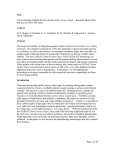

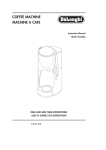
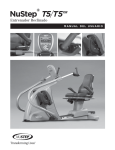
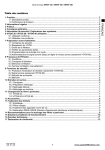
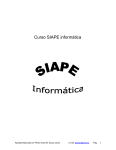
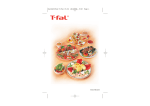
![SIRIUS® [ MultiGas Detector ] - Ex-Ox](http://vs1.manualzilla.com/store/data/005943422_1-205976de5d5a2c1a8aefcbb2de78019a-150x150.png)







